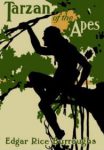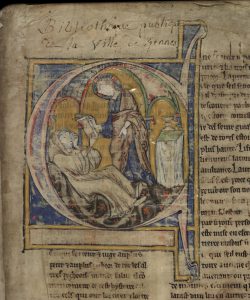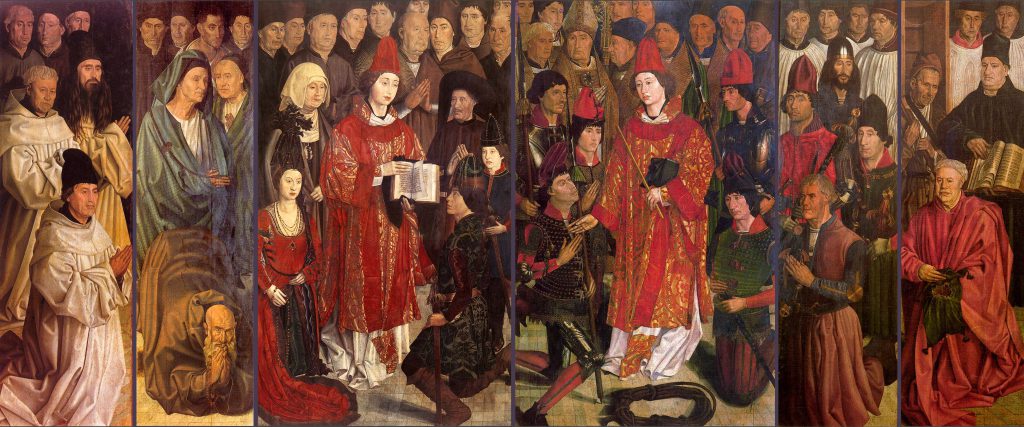How to Be Tarzan in the Catalog, Or, Tarzan-Moves of the Mind
July 2, 2022 in Manuscript Studies, Research Group Speaks (The Series)
The Research Group Speaks
Episode 8

Tarzan of the Apes (1914). Image Public Domain via Wikimedia Commons.
Tarzan-Moves of the Mind
— or —
Brachiation in Research:
Going from Indiana Jones’s Big Picture
to Effective Research Moves
Linde M. Brocato
Saturday, 17 September 2022 online via Zoom

Rennes, Bibliothèque Municipale, MS 255, folio 1 recto. L’Estoire del saint Graal, Opening initial.
Photographer: Peter Scott. Image via Wikimedia Commons.
[Posted on 2 July 2022, with updates]
The Plan
This Episode in the online series of The Research Group Speaks complements and develops from Episode 4 (11 December 2021):
As the next installment, this one about Tarzan and Brachiation applies the ideas and techniques explored then to some specific problems.
While we might informally call the subject of Episode 8 “How to be Tarzan in the Catalog”, the full title reveals the complexity and some appropriate exercises to strengthen skills for encountering the challenges — some of which might be unexpected.
The Aim and the Reach
Our presenter Linde M. Brocato, scholar-librarian, is Associate of the Research Group on Manuscript [and Other] Evidence, and long-time contributor to our events of various kinds. On her experience and expertise, see Linde Brocato, Linde M. Brocato, Curriculum Vitae, and Google Scholar.
She describes her plan for the Episode as an invitation
, and an inviting challenge:
Tarzan-Moves of the Mind,
— or —
Brachiation in Research:
Going from Indiana Jones’ Big Picture to Effective Research Moves
Linde M. Brocato
This workshop / demonstration of how to leverage the power of the bibliographical catalog follows up on the presentation 11 December 2021,“How to be Indiana Jones in the Catalog: Treasure and Power in/of the Bibliographical Record”, applying those ideas and techniques to specific bibliographic problems.
I invite submissions of irritating and evasive bibliographic problems for a demonstration of how I would go about solving them. Let’s see if we can!
The earlier Episode, with a Handout with useful links, considered as ‘model’ the popular fictional figure of Indiana Jones (or Dr. Henry Walton “Indiana” Jones, Jr.) in the quest for a Holy Grail of some kind.
Now, the Episode turns to another “notable” character for inspiration and possible instruction in an authentic encounter of material evidence “in the wild”.
Brachiation in Research
After Indiana Jones, this Episode turns to another imaginary figure, larger perhaps than life, and evocative as can be: Tarzan in one form and another.

Color cover of the book Tarzan of the Apes, written by Edgar Rice Burroughs and published in 1914. Image Public Domain via Wikimedia Commons.
For example, the fabulous character created by Edgar Rice Burroughs, starting with a magazine publication in 1912, Tarzan (John Clayton II, Viscount Greystoke) had a feral upbringing and an intricate, conflicted, introduction to ‘civilization’, before choosing to return to the wild (in whatever forms) — with heroic encounters. Many films, among other media, ensued, successfully to promulgate, expand, and reinforce knowledge (or the like) about this mythical creature, as a foil or embodiment of the situation of the individual in (or against) the prevailing general cases or standards.
With this resonant model, what might we discover in the wilds — or a hitherto neglected or ill-tended wilderness — to be found in the catalog (however defined)?
Some of our earlier blogposts have expressed grumbles about the standardization of catalog descriptions, notably where WorldCat lumps together multiple cases of individual sets of various Portfolios, with specimen manuscript and printed leaves, assembled from dismembered books by Otto Ege. See, for example, More Discoveries for ‘Otto Ege Manuscript 61″.
We look forward to learning more about the skills of Brachiation, and how to exercise as well as to develop and deploy them, when we find ourselves in the Catalog(ue) — and in the world of exploring books and related written materials of whatever kind or unkind.
This Episode engages in conversation not only with other Episodes of The Research Group Speaks: The Series, but also with other sessions in our RGME events. Notable among them are the examinations of “Catalogs, Metadata, and Databases” in that series as well as in our 2022 Spring and Autumn Symposia on “Structured Knowledge”, whose theme was designed and inspired by Linde Brocato.
Send Suggestions for Bibliographical Problems to Explore
Please let us know if you wish to attend this Episode and if you have specific bibliographic wishes on your To Do List. If so, please contact [email protected].
*****
[Update:
Soon after the event, there appeared a news story about a discovery which Linde mentioned in the University of Miami Libraries — discoveries by a new member of staff, Catherine Steele, bringing to light not only one, but two, important books.
Among the findings was a sketch in a book at the University of Miami Otto G. Richter Library determined to be a drawing by Mexican muralist Diego Rivera. . . . It was owned by Andy Warhol, the famous artist, and then sold to Jay Jensen, a University of Miami alumnus and former actor who taught drama at Miami Beach Senior High School for many years. Jensen donated the book to the University.
The next discovery, only a few days later, “was a green cloth tome of ‘Leaves of Grass’ signed by the author, American poet Walt Whitman, which was published in 1882″.
Recognized for what they are, they can tell their stories more clearly.
“These treasures, and others housed by Special Collections, provide many opportunities for students and scholars to do research and delve deeper into areas of study such as art, history, and literature”, [Linde M.] Brocato pointed out.
“This collection is heavily used for teaching and that is why you want to have these kinds of books.”
There is a special excitement when a user encounters a book like Whitman’s and the one with the Rivera sketch, Brocato explained. “Once you have opened it up there is a physical engagement. It almost jumps out at you.”
We know the feeling.
*****
More Episodes are in hand and in preparation. See The Research Group Speaks: The Series.
Do you have suggestions for subjects? Please let us know. Please leave your Comments below, Contact Us, and visit our FaceBook Page. We look forward to hearing from you.
 Lisbon, Museu Nacional de Arte Antiga: The mid 15th-century Saint Vincent Panels, attributed to Nuno Gonçalves. Image (https://upload.wikimedia.org/wikipedia/commons/3/3a/Nuno_Gon%C3%A7alves._Paineis_de_S%C3%A3o_Vicente_de_Fora.jpg) via Creative Commons.
Lisbon, Museu Nacional de Arte Antiga: The mid 15th-century Saint Vincent Panels, attributed to Nuno Gonçalves. Image (https://upload.wikimedia.org/wikipedia/commons/3/3a/Nuno_Gon%C3%A7alves._Paineis_de_S%C3%A3o_Vicente_de_Fora.jpg) via Creative Commons.
*****
